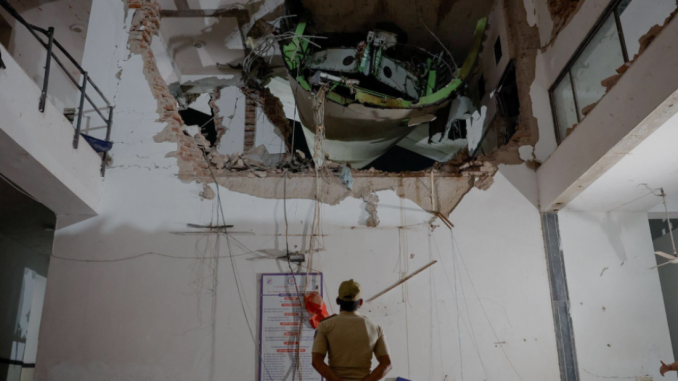
Iran has replaced air defence systems damaged during last month’s conflict with Israel, according to a report by Iran’s Defah Press news agency on Sunday, citing Mahmoud Mousavi, Deputy for Operations of the regular army.
| Published July 20, 2025
In the wake of one of the most intense flare-ups between Iran and Israel in recent years, Tehran has announced the full restoration of its air defense systems damaged during the brief but destructive conflict in June. The announcement, delivered by Rear Admiral Mahmoud Mousavi, underscores Iran’s strategic emphasis on self-reliance and rapid recovery, leveraging a combination of domestic production and pre-positioned reserves. As regional tensions simmer and global powers watch closely, Iran’s response marks more than a technical achievement—it sends a political message of resilience, readiness, and defiance.
🇮🇷 Iran Says Air‑Defences Fully Replaced Following June Strikes
Iran’s deputy army operations chief, Rear Admiral Mahmoud Mousavi, confirmed today (July 20, 2025) that systems hit during June’s 12-day conflict with Israel were swiftly replaced using domestically stored reserve assets. This includes Iran’s own long-range Bavar‑373 alongside older S‑300 units.
🔧 The Strike & Response Timeline
-
June Conflict
-
Israel’s air force struck deep into Iran, reportedly destroying about a third of its air defence systems, including S‑300 and Bavar‑373 assets.
-
Iranian forces responded with successive missile and drone barrages targeting Israel.
-
-
Replenishment Efforts
-
Mousavi noted that replacement systems were “pre-arranged” and stored in secure locations, enabling rapid re-deployment and restoration of airspace coverage.
-
He emphasized that, thanks to domestic ingenuity, the air defence capability was not only restored but is now fully operational.
-
 Implications: What Iran’s Rapid Air Defense Recovery Means
Implications: What Iran’s Rapid Air Defense Recovery Means
🛡️ Restored Deterrence
By swiftly replacing key air defense systems destroyed by Israeli strikes, Iran signals that it can withstand—and recover from—high-level attacks. This undermines the strategic value of future Israeli air raids and forces adversaries to reconsider the cost-benefit equation of targeting Iran’s infrastructure.
🔄 Shift Toward Military Self-Reliance
The use of domestically produced systems like the Bavar‑373, and the apparent absence of emergency foreign arms imports, highlights Iran’s progress toward indigenous military capability. This strengthens its long-term defense posture and reduces dependence on traditional suppliers like Russia or China, at least in public.
📡 Repositioning Near Strategic Sites
Iran has reportedly relocated its newly installed air defense batteries closer to high-value nuclear facilities. This reflects an evolved threat perception and may complicate any future Israeli or U.S. operations aimed at crippling Iran’s nuclear capabilities.
🧠 Psychological Messaging
Tehran’s messaging isn’t just technical—it’s psychological. The rapid replenishment of missile defenses was heavily publicized to reassure domestic audiences and deter external threats. It also sends a broader message to Iran’s regional rivals: attempts to destabilize its defense networks will be temporary at best.
🕊️ Impact on Nuclear Negotiations
The restoration effort may alter the diplomatic climate around Iran’s nuclear program. A nation perceived as militarily vulnerable is more susceptible to external pressure. But with its defenses restored, Iran reenters potential talks from a stronger, more confident position.
⚔️ Increased Risk of Escalation
Finally, while the recovery suggests readiness and control, it also raises the risk of further confrontation. A well-shielded Iran might be more assertive in its regional policies—supporting proxies, testing airspace boundaries, or resisting international inspection regimes.
 Overall Takeaway: A Message Beyond Missiles
Overall Takeaway: A Message Beyond Missiles
Iran’s rapid restoration of its air defense systems is more than a logistical achievement—it’s a calculated demonstration of resilience and strategic intent. In the face of Israeli strikes that briefly degraded its military infrastructure, Tehran’s ability to bounce back swiftly has shifted perceptions of its vulnerability. Domestically, it reinforces national confidence; regionally, it reasserts deterrence; and globally, it complicates the calculus of adversaries considering future interventions.
As the Middle East remains on edge, this recovery signals that Iran is not only prepared for further escalation but is also laying the groundwork to face it on its own terms. Whether this bolstered defense posture leads to greater stability or provokes new confrontations remains to be seen—but one thing is clear: Iran intends to stay ready, visible, and in control.





Be the first to comment